Remote Area Medical honors late founder with an innovative approach to serving during the pandemic
It’s an early Friday morning in February, and the Jacob Building in Knoxville has transformed inside. The sun has not yet risen, and yet people have been here working since 5 a.m. A team arrived Thursday to prepare the expansive setup. Volunteers and staff members are masked, wearing varying amounts of personal protective equipment, as they go over duties with their teams. White tents, 10’ by 10’ in size, cover the main floor, each connected to a special filtration system. Out front, check-in tables are ready with thermometers and COVID-19 questionnaires close at hand.
Outside, masked families, seniors, middle-aged couples, and neighbors are waiting to receive their text to enter. Some have been there since mid-day Thursday to ensure they would be seen. They’ve come for free dental, vision and medical care, and that’s exactly what they’ll receive at this clinic by Remote Area Medical.
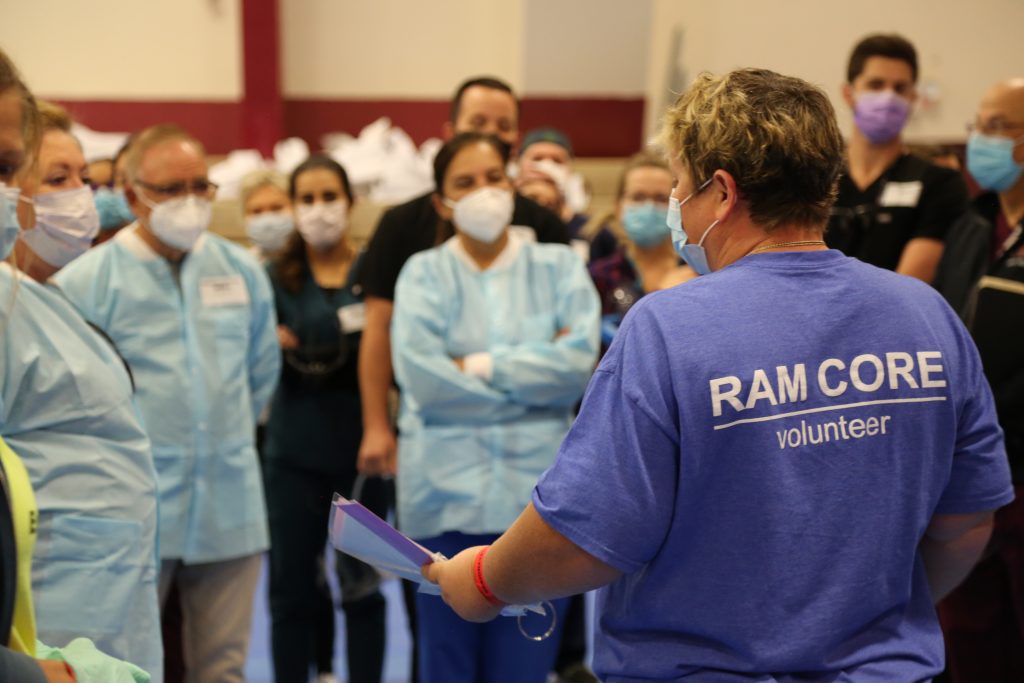
In a matter of three days, 700 people receive care; more than 200 of them receiving vision care alone. Dental cleanings and x-rays are performed, women’s health exams and pap smears are carried out, flu shots are given, mental health counseling is available, osteopathic manual treatments are undergone, skin cancer consultations occur, and the list goes on. But even with all of this work, there is not a single cost to the patient. They do not need insurance or to fill out extensive paperwork. They simply arrive, give their name, and receive care.
From an outsider view, this clinic seems too good to be true, a once-in-a-lifetime opportunity that might never come again. However, for Remote Area Medical, it’s just another weekend, another opportunity to fulfill its mission to prevent pain and alleviate suffering by providing free quality healthcare to those in need.
An Important Mission
Remote Area Medical, or RAM as many know it, was founded in Knoxville in 1985 by England native Stan Brock, to address the lack of adequate healthcare in today’s world. Having spent time early in his life in a village in South America where the closest doctor was a staggering 26 days away, Brock vowed to one day make healthcare accessible for remote locations.
After a successful career in television and film (most notably hosting the show, “Mutual of Omaha’s Wild Kingdom”), Brock formed RAM in Knoxville and got to work helping international communities access healthcare. Then an airborne organization, Brock and his team of volunteers would parachute into communities lacking access, airdropping food and supplies when necessary. But as the 90s rolled in, the mission came much closer to home. Local communities began contacting Brock, requesting help for their constituents. And so, the local clinics were born, providing dental, vision, and medical care (veterinary care, too) free of charge to neighbors far and wide.
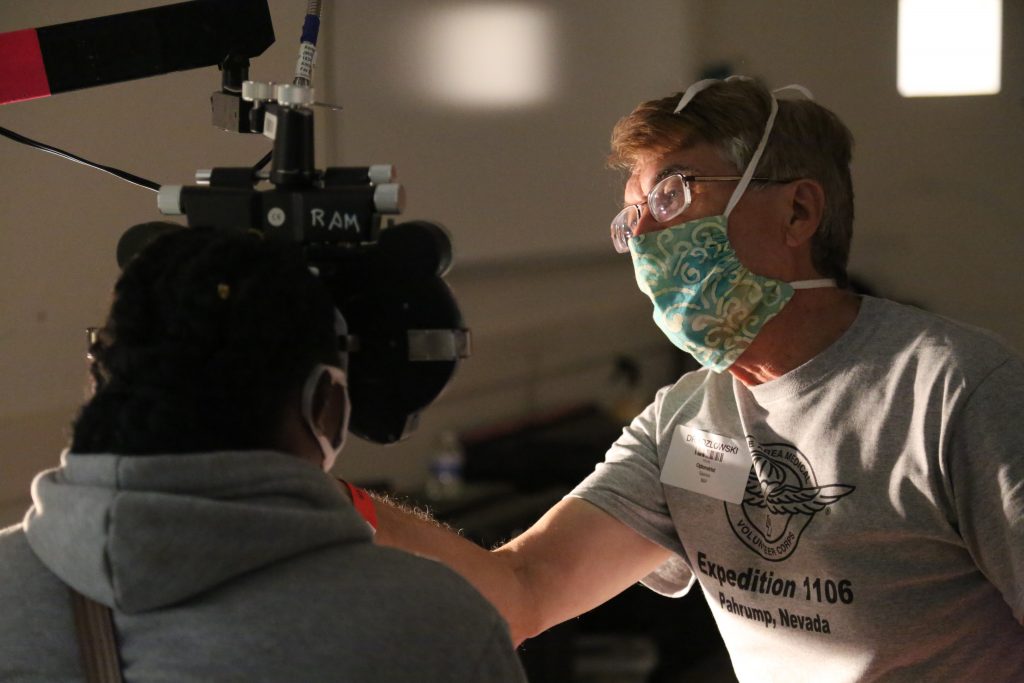
“Stan built relationships all around the world,” says Jeff Eastman, the organization’s CEO. “But Stan, he was so humble.” Eastman joined RAM originally as a volunteer, building a close relationship with Brock during that time. After one year on staff, Brock asked Eastman to take the helm as his first CEO, ensuring that the organization lived on beyond him, knowing very well that people will always be in need.
Brock passed away in 2018, but Eastman says, he spent his final five years tackling projects with RAM that he always dreamed of working on: supporting inhabitants in South America (which inspired him to found RAM), assisting migrants in Greece, and providing hurricane relief. Amidst this work, he remained heavily involved in the regular goings-on of the clinics. “When Mr. Brock said, ‘We’re going to do this,’ you better believe that everything dropped. He was always one to find new ways to do things, to provide free health care.”
Critical Clinics
Over the years, more and more of RAM’s work has been focused on clinics. “When we first started, we were doing around 10 to 12 events a year,” says RAM Chief Operations Officer Chris Hall. “And then a year prior to COVID, we were close to 100 events happening in a year.”
Joe Ann Heck is one of the neighbors who has attended a clinic. Early last year, Heck, a Morristown, Tennessee resident and grandmother to nine, attended a clinic in Knoxville with two of her friends. She was in critical need of dental care. She and her friends arrived after midnight and stayed in the car until about 4 a.m. when they got in line. By 6 a.m. the clinic opened and hundreds were lined up seeking care.
“I had always said, ‘I’m going to go to get my teeth pulled,’ but I was always too scared to get it done,” she says. But even with the anxiety, she went in and received the care she needed. Heck had 27 teeth pulled that day, a move she said may have saved her life. “I couldn’t afford to go out and get every one of my teeth done; that’s thousands of dollars.” But having lived with crumbling teeth for years, thanks to RAM she was finally free from pain.
Heck’s story isn’t unusual. It’s just one of thousands each year. In 2018 alone, with a nearly $5 million budget, RAM served 40,309 adults and 4,498 children, providing roughly $15.4 million in free healthcare. “We know there’s always a need. We know RAM’s not going to be able to completely fill that need, but we know we will be able to fill a lot of gaps,” says RAM Clinic Coordinator Tiffani Yvette Carrasco.
When communities reach out to RAM with an interest in hosting a clinic, Carrasco and other clinic coordinators get the ball rolling. The clinic date is ideally chosen 12 to 18 months in advance and then RAM and the local community have their tasks, securing a venue, solidifying their community host group, recruiting volunteers, promoting to the community, and so on. All of the work is done to ensure a two-day clinic, which can see hundreds, goes on without issue.
Shifting for COVID
RAM carries on Brock’s legacy of care and innovation, continuing to approach RAM work the way Brock would have. And this past year has been no exception. When the pandemic reached the United States in early 2020, RAM’s work shifted. The in-person clinics were postponed as the team reevaluated how they could safely provide free healthcare to communities. “We looked around and said how can we make a difference,” Eastman recalls.
The work shifted. Volunteers and staff went to work manning COVID-19 testing sites, helping to test more than 60,000 individuals. Then the organization launched telehealth, something that had been on the back burner for a while. And amidst this work, RAM spent three months coming up with new systems and procedures for their clinics. “Prior to COVID, RAM’s philosophy was to get as many people in the building at one time as we can,” says Hall, adding that it tended to yield more patients treated. But when COVID-19 hit and the large gathering of people was no longer an option, the team went back to reinvent their process, redesigning all of it in-house with the help of trusted volunteers. By August 2020, the clinics returned.

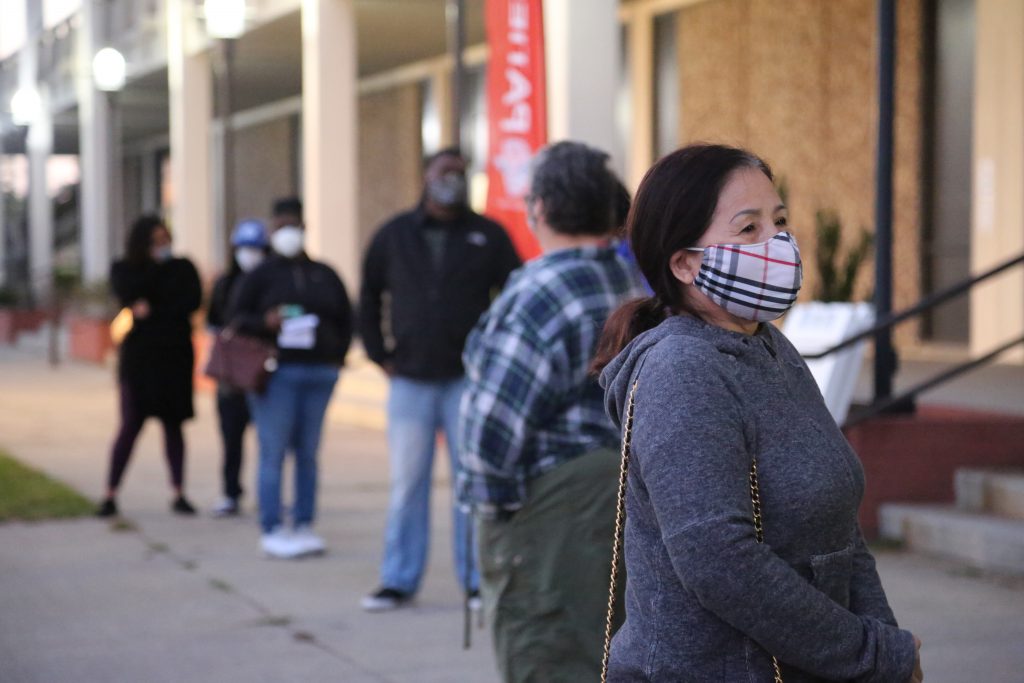
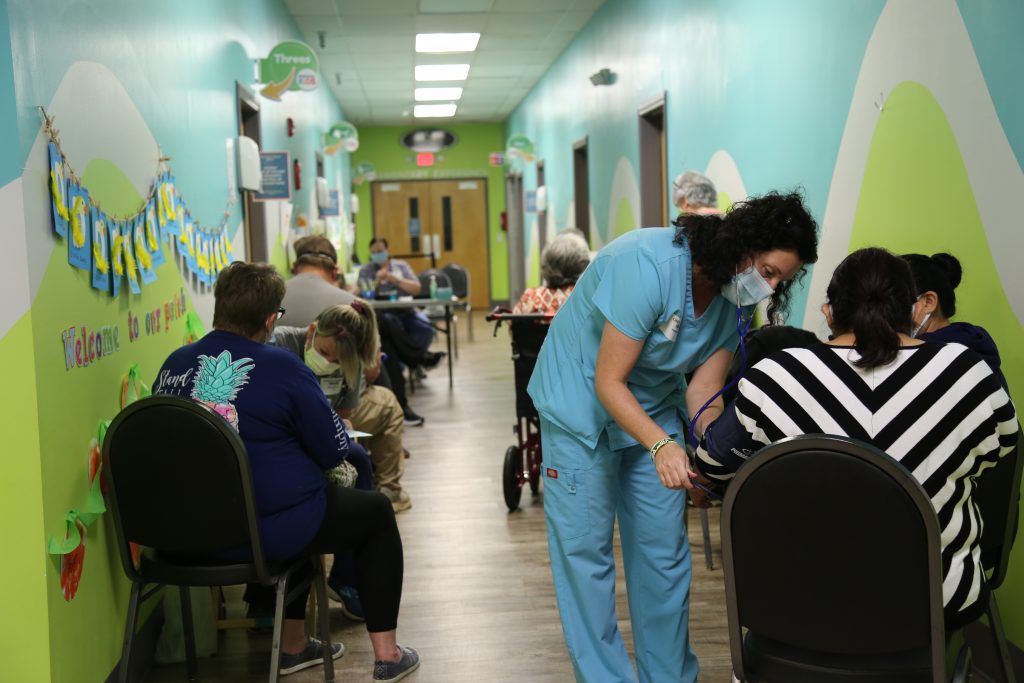
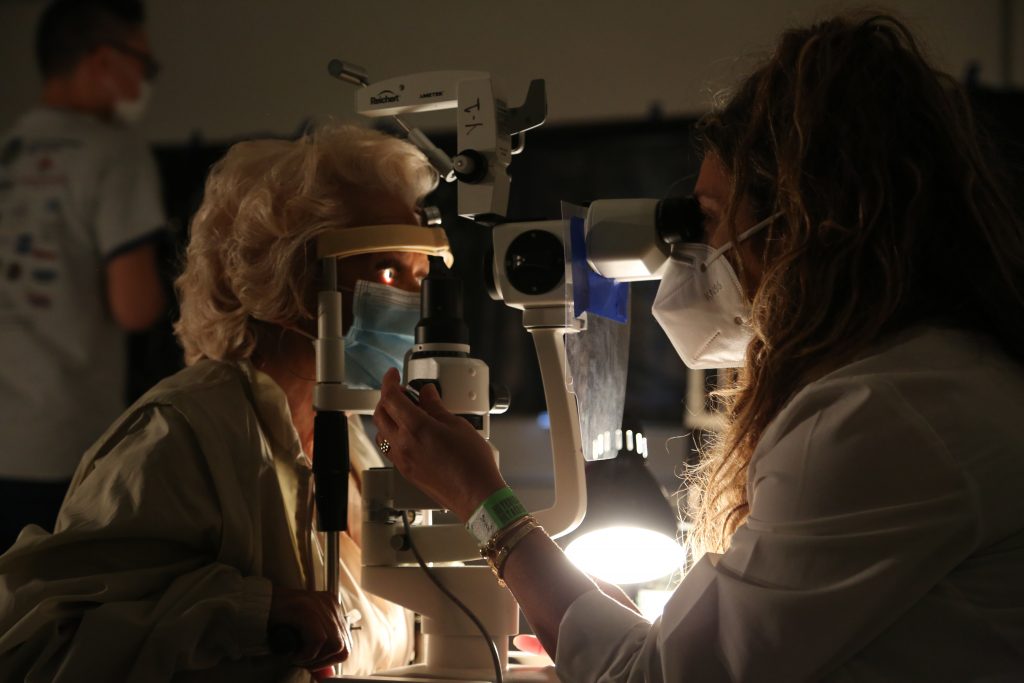
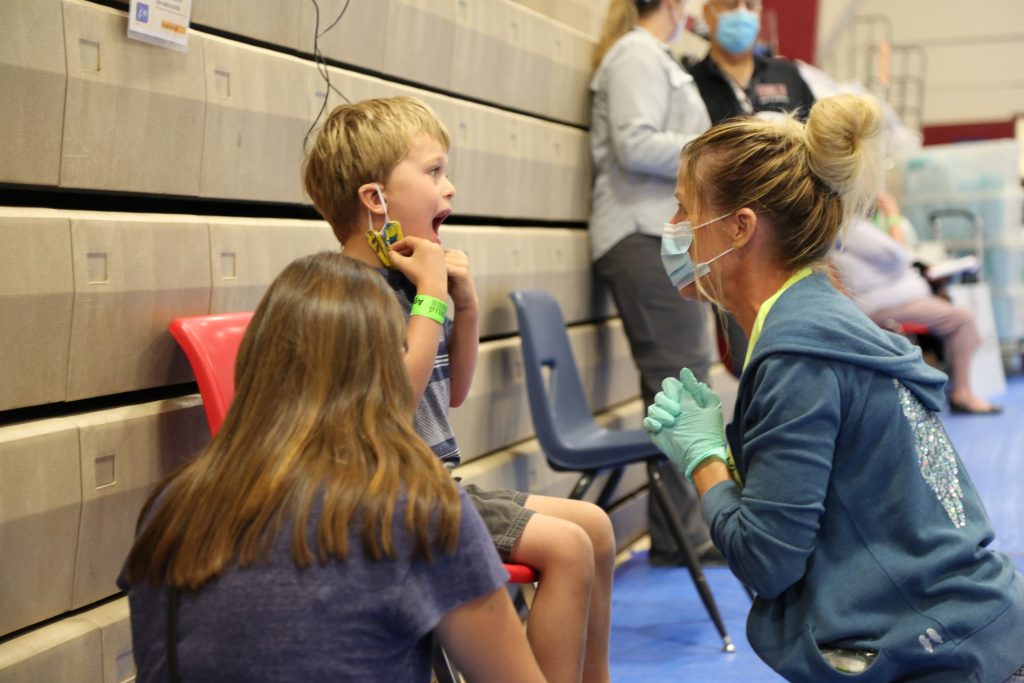
Instead of open clinics with chairs upon chairs filling up a school gym or church auditorium, medical suites with negative air pressure and Hepa air filtration units cover the floors. And the way people are checked in, something seemingly simple, had to change entirely. Patients now don’t have to wait in a line. Instead, they are texted when it is their time to check in, which controls the flow of people, ensuring everyone can be screened before entering.
A clinic that might typically have 20 chairs might now have 8. A clinic that might typically have 60 to 80 chairs might have 20 or 30. And all across the clinic, sanitation and safety are even more of a priority than before. “COVID and the pandemic continues. The challenges from it continue,” Hall says, “but we have done a very good job of adapting how we care for patients.” Many of the changes will stay, he adds, even when the pandemic settles.
The Ever-Critical Volunteers
The number of patients that RAM is able to see at each clinic is based off of the number of providers present. RAM has historically recruited volunteer providers who are at or nearing retirement along with student providers. However, with COVID-19, typical recruitment efforts were thwarted. Providers who are 65+ are deemed “high risk” for COVID-19 and many schools stopped their students from volunteering this academic year. As a result, the strategy had to change but, “the team was adaptable, flexible and really went after it,” Hall says.
It has been challenging, but the clinics are happening and the volunteers keep coming back, like Keith Forsyth, who has been volunteering with RAM for the last four years, after two decades as a nurse. “I love being a nurse. I love being with people and taking care of people and providing and meeting their needs to the best of my ability,” he says. A serious back injury and 13 surgeries over the course of a few years left Forsyth unable to work a job he adored. He took a chance and volunteered for a RAM clinic during a particularly challenging time in his life, and while his back pain still existed, what the volunteering did for his spirit superseded that pain. “It just changed my whole attitude,” he says. “I just kind of feel like it was more of a calling, to be more of a true servant.”
Since then, he has volunteered for a dozen clinics and was part of the RAM crew that handled COVID-19 testing and flu shots last year. “There is so much that goes on behind the scenes,” he says.

And he’s right. Volunteers make up most of the person-power of a clinic. The RAM staff is about 44 people strong, but with so much work to do and so many communities to serve, there may only be three to four staff members present for a clinic. They are joined by hundreds of volunteers who help with everything from the planning and setup through to the execution and cleanup. In a single year, just under 18,000 volunteers give their time to this work.
Health care professionals are critical, of course. But so are the volunteers who register patients when they arrive, ensure patients know where to go, serve food and water, set up and manage sterilization, clean, and are trained to make glasses in the mobile eye lab. RAM exists because of the volunteers, and with the changes that the pandemic brought, those volunteers are even more critical. Eastman says one of their biggest need areas right now are with “core volunteers,” who guide, train, and lead other volunteers.
“We want to make sure that our volunteers have a good experience,” Eastman says. “We’ve got the resources and the tools on the ground for them when they come. They’re giving us one of the most valuable things that they have, which is their time.”
Looking Ahead
COVID-19 has changed things for the world. From Carrasco’s perspective, the pandemic has widened the gaps they are seeing. “It was critical before, but the pandemic has heightened a lot of people’s concerns health-wise,” she says. Many have lost access to health insurance, and the challenges that RAM has always addressed seem to have only gotten worse. “It’s made it really difficult for our patients.”
The 2021 calendar is filling up with one- to two-day clinics scheduled across East Tennessee, Florida, Virginia, Kentucky, Pennsylvania, New York, Ohio, Iowa, and Georgia, among others. And as the staff and volunteers prepare for these clinics, they will be reminded of the impact. “Right now, in a time where so much is divided in the world, this is a true opportunity to show compassion to people,” Hall says, “and really show that we’re here together, we’re stronger together and we want to be strong and help each other out as much as we can.”
If interested in volunteering or supporting the work of Remote Area Medical, readers can visit www.ramusa.org.
